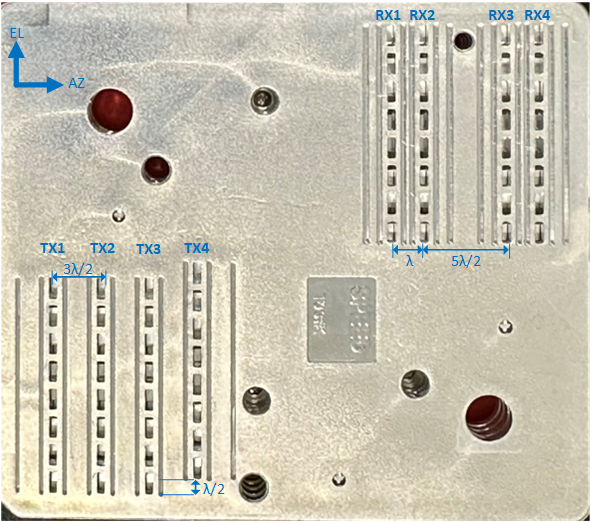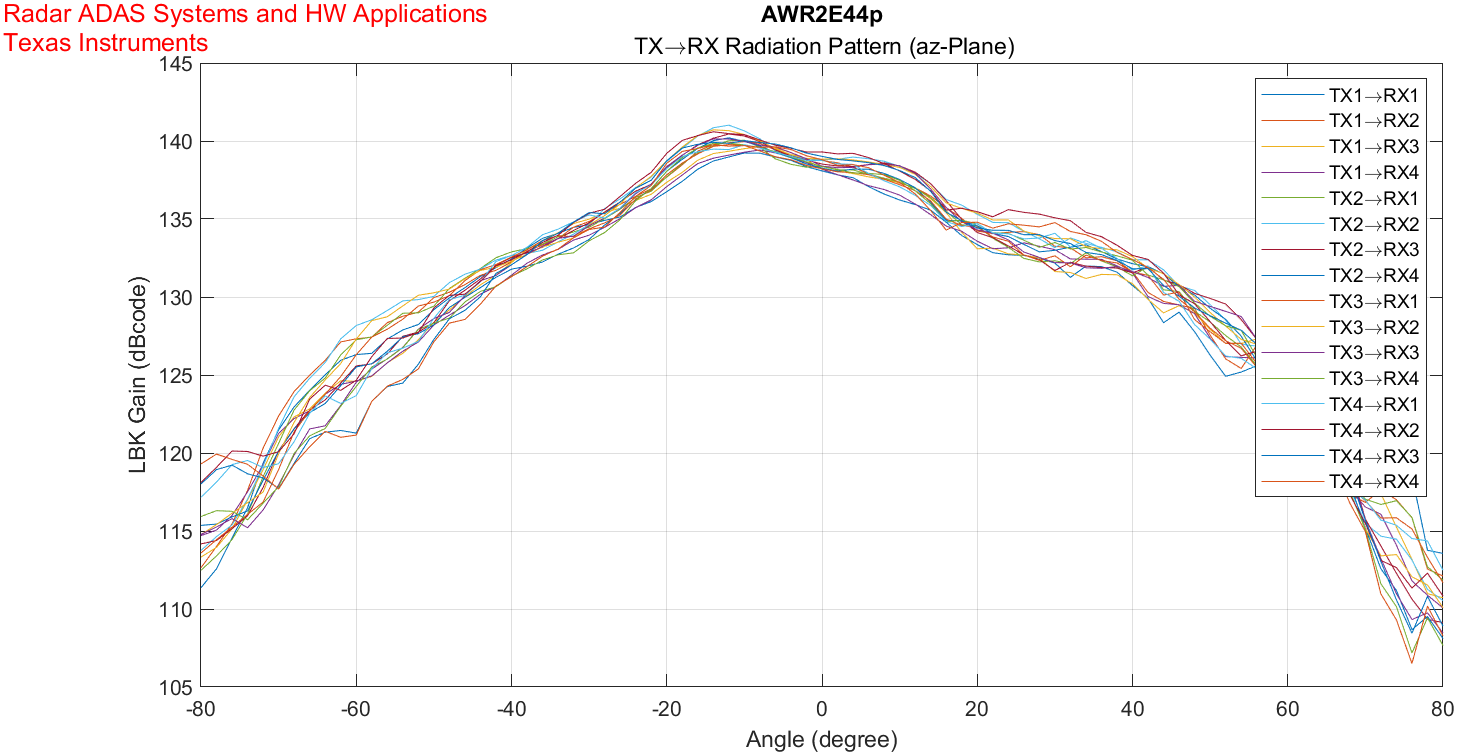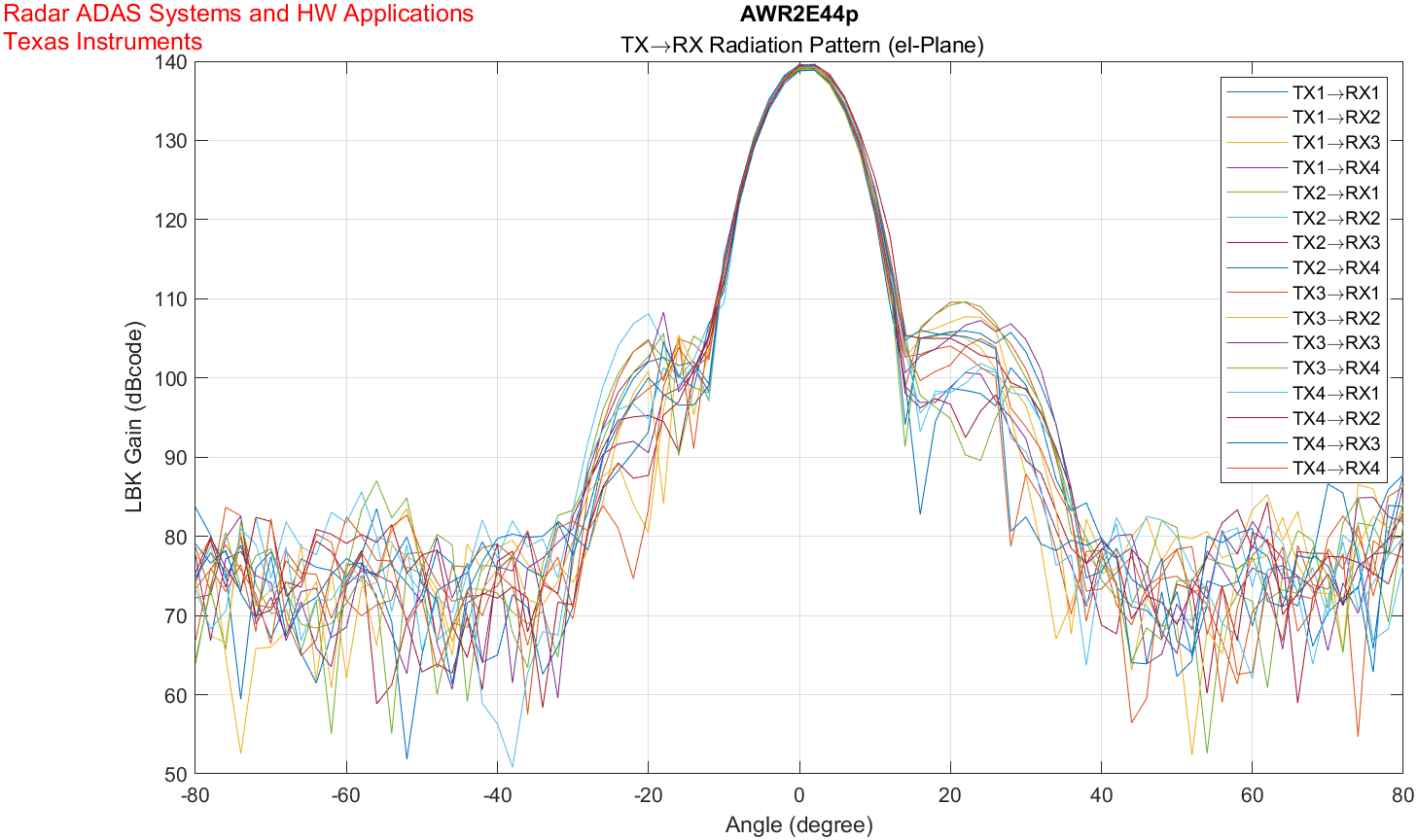SWRU631 November 2024
- 1
- Description
- Get Started
- Features
- 5
- 1Evaluation Module Overview
-
2Hardware
- 2.1 PCB Handling Recommendations
- 2.2 Power Connections
- 2.3 Connectors
- 2.4 Antenna
- 2.5 PMIC
- 2.6 On-Board Sensors
- 2.7 PC Connection
- 2.8 Connecting the AWR2E44PEVM to the DCA1000 EVM
- 2.9 Jumpers, Switches, and LEDs
- 3Software
- 4Hardware Design Files
- 5Additional Information
- 6Revision History
2.4 Antenna
The AWR2E44PEVM includes a 3D waveguide antenna produced by SPEED for the four receivers and four transmitters, which enables tracking multiple objects with their distance and angle information. This antenna design enables estimation of both azimuth and elevation angles, which enables object detection in a 3-D plane (see Figure 2-11). Note: RX1 and RX4 are 180 degrees out of phase which should be compensated for in post processing.
 Figure 2-11 AWR2E44PEVM Antenna Design
Figure 2-11 AWR2E44PEVM Antenna DesignThe antenna design shown in Figure 2-11 results in the virtual antenna array shown in Figure 2-12. The distance between two adjacent cells is lambda/2.
 Figure 2-12 Virtual Antenna Array
Figure 2-12 Virtual Antenna ArrayThe antenna peak gain is 15 dBi across the frequency band of 76 to 81GHz. The radiation pattern of the antenna in the horizontal plan (H-plane) and elevation plan (E-plane) is as shown in Figure 2-13 and Figure 2-14, respectively.
The beamwidth of the antenna design can be determined from the radiation patterns provided below. For example, based on 3-dB drop in the gain as compared to bore sight, the horizontal 3dB-beamwidth is approximately ±35 degrees (see Figure 2-13), and elevation 3dB-beamwidth is approximately ±3 degrees (see Figure 2-14). Similarly, the horizontal 6 dB beamwidth is approximately ±42 degrees (see Figure 2-13) and the elevation 6dB-beamwidth is approximately ±5 degrees (see Figure 2-14).
 Figure 2-13 Azimuth Radiation Pattern (77GHz to 80GHz)
Figure 2-13 Azimuth Radiation Pattern (77GHz to 80GHz) Figure 2-14 Elevation Radiation Pattern (77GHz to 80GHz)
Figure 2-14 Elevation Radiation Pattern (77GHz to 80GHz)